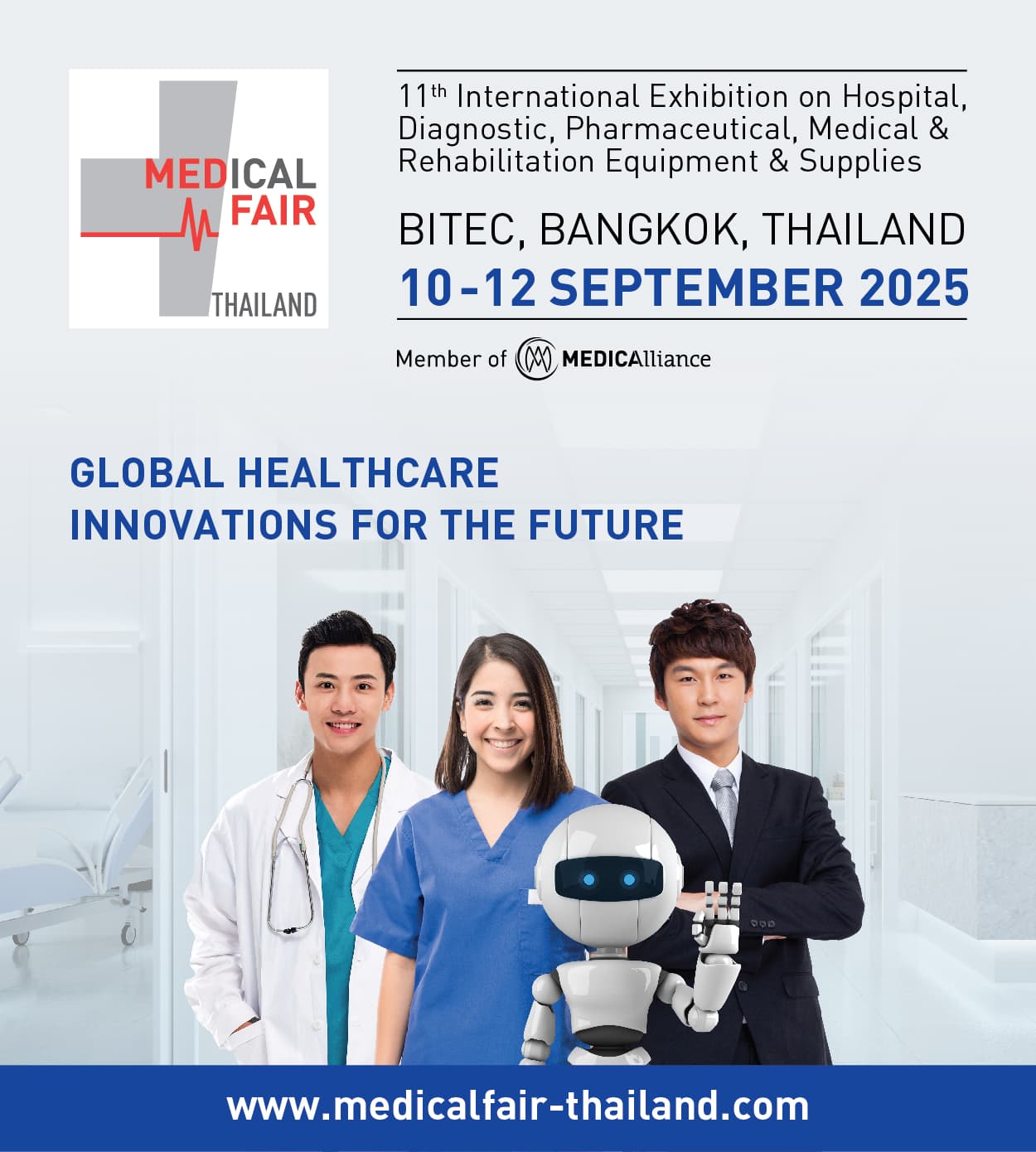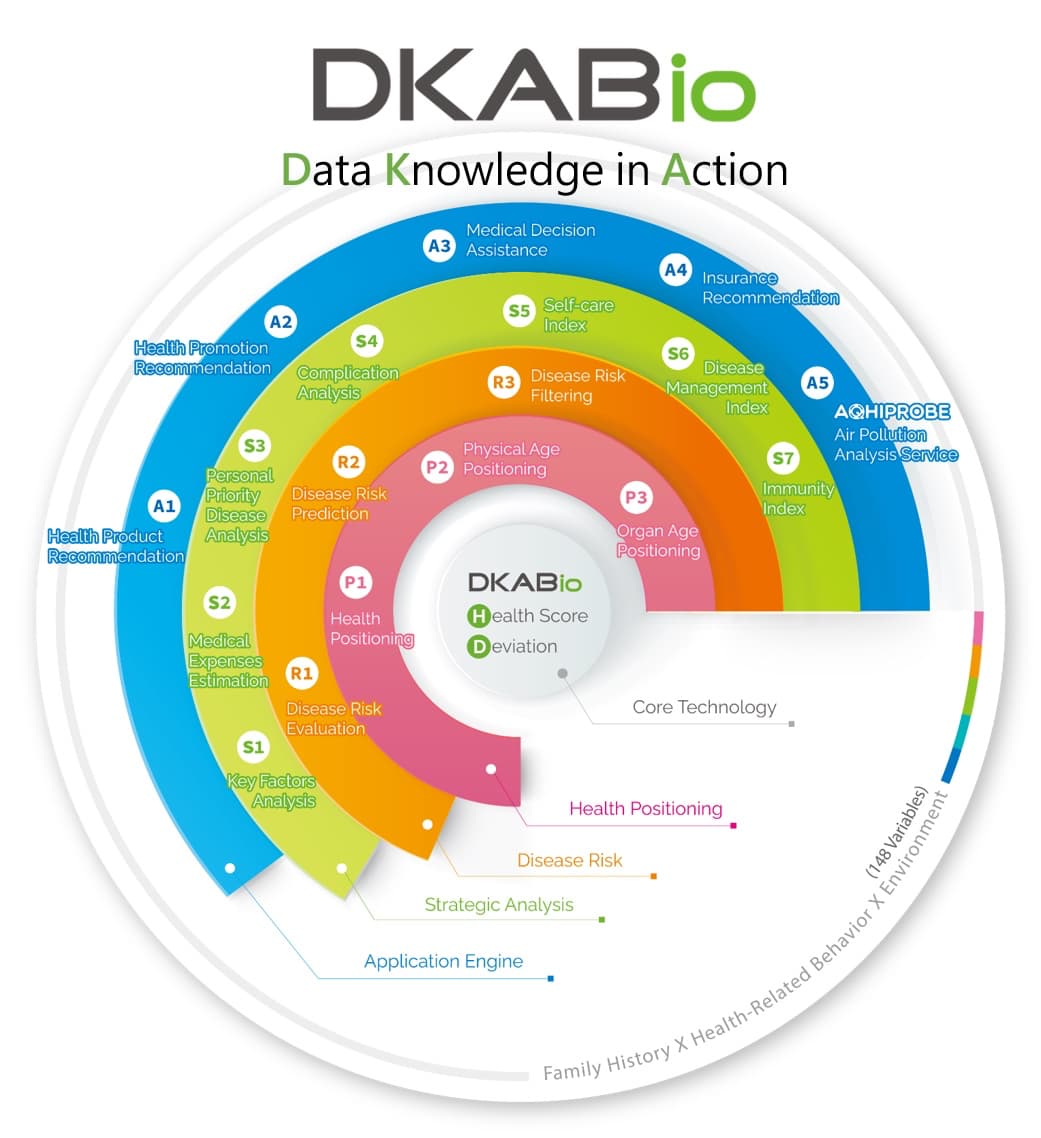



Unveiling their revolutionary smart health risk prediction system, DKABio shares the fruits of eight years of research, showcasing how AI techniques help users manage their health effectively. By accurately positioning an individual's health status and analysing future risk of chronic diseases, users can proactively set clear health management goals before diseases occur, leading to more informed decision-making and improved health outcomes. Here we talk to Ya Hui, Yang – General Manager / President at DKABio Co Ltd.
Based on eight-year research, DKABio adopted AI techniques to help users manage their health by positioning individual's health status and analyzing the risk of getting chronic diseases in the future. Thus, users are able to set clear health management goal before diseases occur and review the effectiveness of health improving.
DKABio undertands that MEDICAL FAIR THAILAND, as an important medical event, has a great influence in Thailand and Southeast Asia market. Therefore, DKABIO decided to participate in the Start-up Park at MEDICAL FAIR THAILAND 2023 to increase our visibility and hope to help people with comprehensive health management.
We hope to gain specific opportunities and benefits, including:
In summary, DKABio's participation in the Start-up Park at MEDICAL FAIR THAILAND 2023 aims to gain collaborative opportunities, establish partnerships, and expand our market presence in Southeast Asia.
Through MEDICAL FAIR THAILAND, we hope to find six related industries - medical, pharmacy, health management, health nurturing, fitness and insurance- to cooperate with us so that DKABio can become the core engine of AI in their services.
We plan to show the following products:
DKABio 1.0, the smart health risk prediction system, which can predict a person's risk on 15 diseases over the 10- year duration; and AQHIPROBE, which can be used to warning regional air pollution risk on personal health. In addition, we are engaging to develop DKABio 2.0, which predicts a person's risk on one single disease over the next 1-5 years, and DKABio HIoT, which uses IoT devices to predict a person's risk of hypertension, hyperlipidemia and hyperglycemia in real time.
We apply clustering result to calculate a “disease-related” health score (HS) to summarize the health status of an individual into one number. Using HS, we establish a classification rule (called “disease map”) to discriminate diseased and non-diseased people. The classification rule also discriminates the non-disease people into healthy and sub-healthy people so that different health management can be taken for disease prevention.
DKABio's health scores are calculated using 148 health variables, with variables containing heredity, environment, and behavioral analysis. We show that the HS is a consistent score in the sense that the difference of health scores based on the training sample and validation sample, respectively, is very small (differences of mean absolute percentage errors within 0 to10 years were less than 0.1%, and all mean absolute percentage errors were between 1.2-1.6 %).
That health scores can be grouped into 4 groups: M1: people in healthy status, M2: people in sub-healthy status, M3: people having HS between 45 and 60, M4: people having HS below 45.
Higher HS indicates that the health status is better or disease risk is lower. HS decreases as age or number of diseases increase. For the disease-free subjects, we also determine cut-offs of HS (depending on age and gender), so that the subjects with HS below the cutoff have much greater chance of developing diseases than those above the cutoff. We define the people satisfying the former condition to be in sub-healthy condition, and the latter, in healthy condition.
Health is invisible and intangible and therefore, all health scores in use have one thing in common: they want to capture and measure health and wellness and make it visible. Health score is very important in at least 3 directions of healthcare management. First, it is useful in interpreting data on the outcome of medical treatments or health management. If the illness or wellness of an individual can be quantified, a range of appropriate scores can be defined with different levels of health conditions. For example, our disease map does provide such function for not only the diseased people but also the non-diseased people. Second, a severity measure of illness such as HS and the corresponding risk predictions can help in identifying groups of patients, who have more severe illness, currently or potentially, and may need extra treatment or care. Third, it may be very useful for refining measures of healthcare resource in individual or institutional level.
Smart Health Risk Analysis will point out the "key impact factor" to provide people with the most significant direction to improve their health, and when the health management effect is achieved, the health score will show a positive response.
With the advancement of AI analysis technology and the accumulation of data, the prediction accuracy will be improved, and according to our research, the prediction time can be shortened from 10 years of disease risk prediction to 1-5 years of risk prediction, which can provide more accurate information about people's disease risk, and even more accurate prediction can be obtained with fewer variables in the future, so as to achieve the benefit of early detection and early prevention.